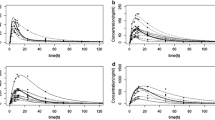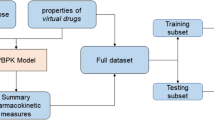Summary
Over the past 20 years, pharmacokinetic programs have been developed for clinical decision making. These clinical pharmacokinetic software programs are designed to assist the clinician in the analysis, interpretation and reporting of serum drug concentration data for a variety of medications. The programs vary in the extent of features and range of medications supported and thus warrant careful review before selecting or purchasing such a program for routine use. A series of programs which are commercially available in the United States was reviewed for this article. The focus of the review is not to recommend a single program or to provide a ranked list of commercially available programs. Information is presented to clinicians to better their understanding of the features of these computer-based clinical resources. As an introduction to this topic, the information presented concentrates on the system and support features.
Those programs that were reviewed demonstrate the ability to assist in the analysis of serum or plasma drug concentration data for most of the medications that warrant therapeutic drug monitoring. They provide both Bayesian and non-Bayesian methods for predicting serum drug concentrations. Standard personal computers were sufficient to run each of the programs reviewed. In addition, most programs offered technical and clinical support. However, the quality of the user manuals and training material varies among software programs. In-depth analytical comparisons are currently being conducted for future publication.
Similar content being viewed by others
References
American Medical Association. Judicial Council opinions and reports, American Medical Association, Chicago, 1971
Cockcroft DW, Gault MH. Prediction of creatinine clearance from serum creatinine. Nephron 16: 31–41, 1976
Dechaux M, Gonzalez G, Broyer M. Créatinine plasmatique, clearance et excretion urinaire de la créatinine chez I’enfant. Archives Françaises de Pédiatric 35: 53–62, 1978
Hallynk F, Soep HH, Thomis J, Boelaert J, Daneels R, et al. Prediction of creatinine clearance from serum creatinine concentration based on lean body mass. Clinical Pharmacology and Therapeutics 30: 414–421, 1981
Hull JH, Sarubbi FA. Gentamicin serum concentrations: pharmacokinetic predictions. Annals of Internal Medicine 85: 183–189, 1976
Jacobs JR. Computerized pharmacokinetic model-driven intravenous infusions: application to intravenous anesthetic drugs. Wellcome Trends in Hospital Pharmacy 11: 13–16, 1989
Jelliffe RW, Jelliffe SM. A computer program for estimation of creatinine clearance from unstable serum creatinine concentration. Mathematical Bioscience 14: 17–24, 1972
Miller RA, Schaffner KF, Meisel A. Ethical and legal issues related to the use of computer programs in clinical medicine. Annals of Internal Medicine 102: 529–536, 1985
Okamoto MP, Chin A, Gill MA, Yellin AE, Berne TV, et al. Comparison of two microcomputer Bayesian pharmacokinetic programs for predicting serum gentamicin concentrations. Clinical Pharmacy 9: 708–709, 1990
Rodvoid KA, Paloucek FP, Zell M. Accuracy of 11 methods for predicting theophylline dose. Clinical Pharmacy 5: 403–408, 1986
Rudd GD, Hull JH, Morris CR, Bryan CK. Estimating creatinine clearance in children: comparison of three methods. American Journal of Hospital Pharmacy 37: 1514–1517, 1980
Sawchuk RJ, Zaske DE. Pharmacokinetics of dosing regimens which utilize multiple intravenous infusions: gentamicin in burn patients. Journal of Pharmacokinetics and Biopharmaceutics 4: 183–195, 1976
Schentag JJ, Aldeman MH. A microcomputer program for tobramycin consult services, based on the two-compartment pharmacokinetic model. Drug Intelligence and Clinical Pharmacy 17: 528–531, 1983
Schwartz GV, Haycock GB, Edelmann CM, Spitzer A. A simple estimate of glomerular filtration rate in children derived from body length and plasma creatinine. Pediatrics 58: 259–263, 1980
Sheiner LB, Beal S, Rosenberg B, Marathe VV. Forecasting individual pharmacokinetics. Clinical Pharmacology and Therapeutics 26: 294–305, 1979
Swartz JI, Fink JL. Legal issues associated with pharmacokinetic software. American Journal of Hospital Pharmacy 46: 120–124, 1989
Young FE. Validation of medical software: present policy of the Food and Drug Administration. Annals of Internal Medicine 196: 628–629, 1987
Author information
Authors and Affiliations
Rights and permissions
About this article
Cite this article
Buffington, D.E., Lampasona, V. & Chandler, M.H.H. Computers in Pharmacokinetics. Clin-Pharmacokinet 25, 205–216 (1993). https://doi.org/10.2165/00003088-199325030-00004
Published:
Issue Date:
DOI: https://doi.org/10.2165/00003088-199325030-00004




